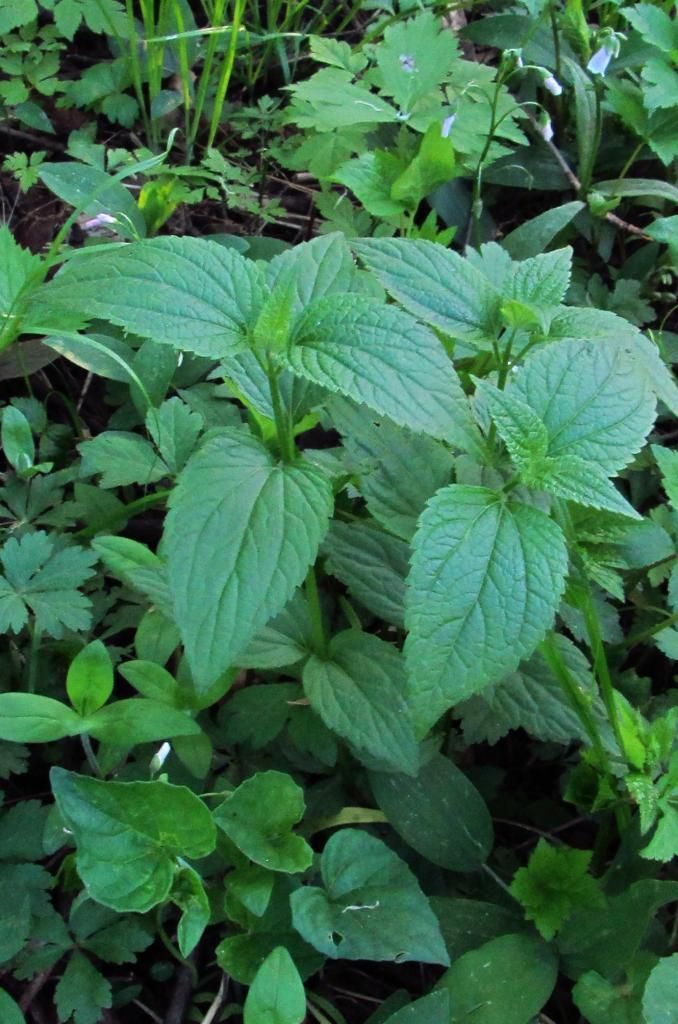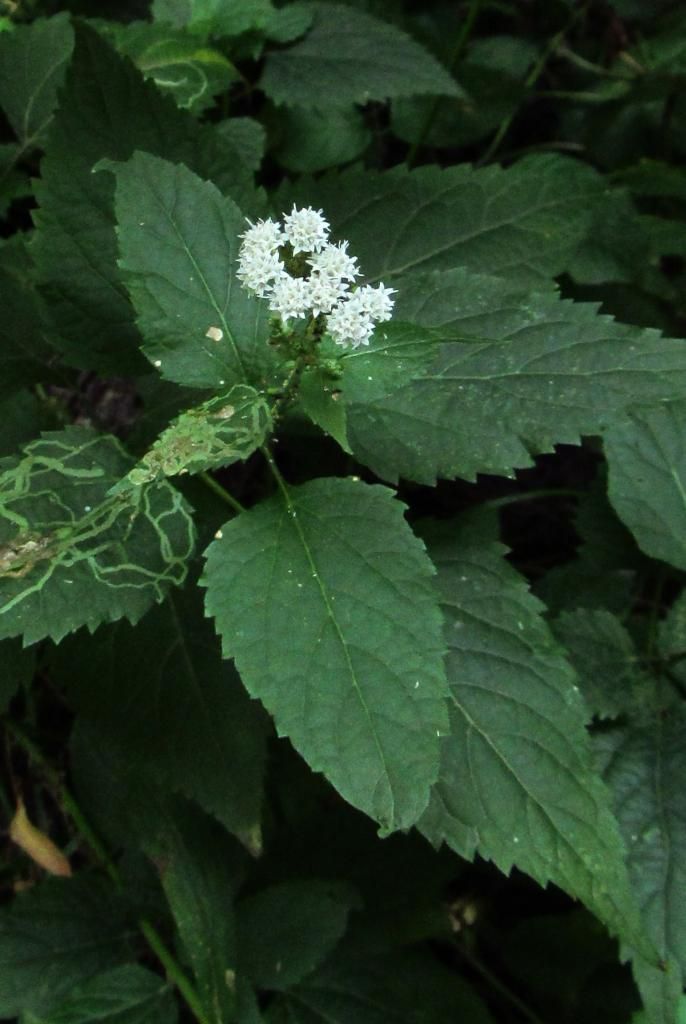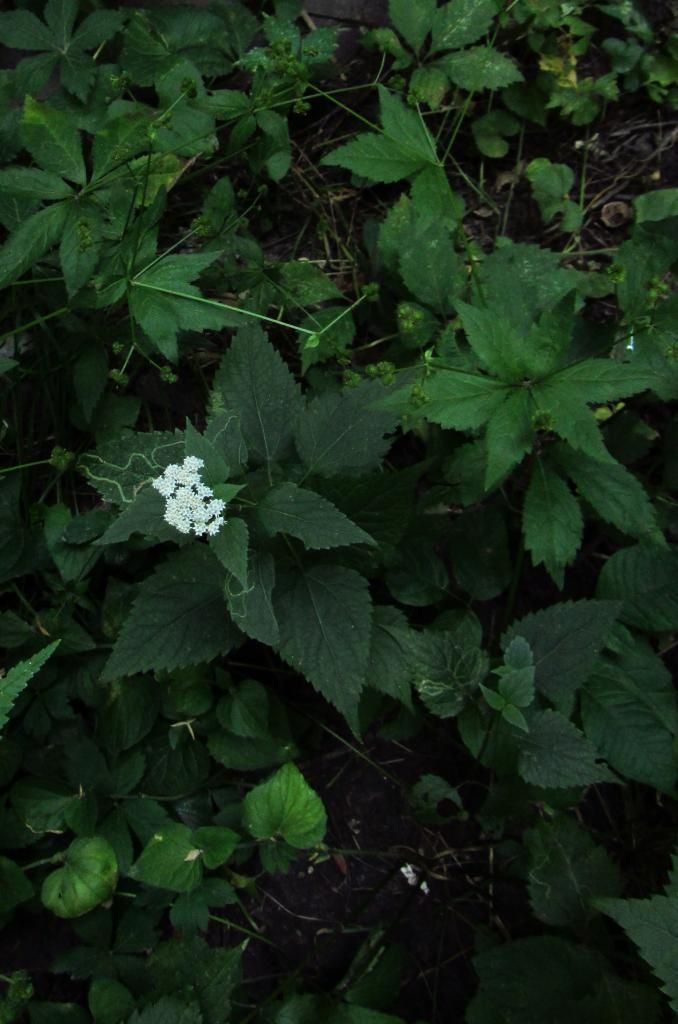I’m taking a break from prairie wildflowers this week to showcase one of the most common plants blooming in Iowa woodlands during the late summer. White snakeroot has a large and tragic place in American history. This native plant indirectly caused thousands of deaths on the frontier during the 19th century. Abraham Lincoln’s mother was probably one of its victims. Several photos of white snakeroot are after the jump.
This is an open thread: all topics welcome.
Native to most of the U.S. and Canada east of the Rocky Mountains, white snakeroot (Ageratina altissima) is a member of the aster family with toothed leaves and “clusters of small fuzzy white flower heads composed entirely of disk flowers” (most asters have ray flowers as well as disk flowers). According to the Illinois wildflowers site, “The common name of this species derives from the erroneous belief among early settlers that the bitter rhizomes were beneficial in the treatment of snakebites.”
White snakeroot starts to emerge in the spring. You can see the veined, toothed leaves in this photo. The plants with the closed pinkish-white flowers surrounding these white snakeroot seedlings are spring beauty.
This plant can thrive in varied environments, according to the Illinois wildflowers website:
Habitats include moist to slightly dry deciduous woodlands, woodland borders, thickets, partially shaded to shady seeps, bluffs,woodland meadows along rivers, powerline clearances in woodlands, shady corners of pastures and yards, fence rows with woody vegetation, and overgrown vacant lots. This species is especially common in wooded areas that are rather disturbed and degraded, although it also occurs at higher quality sites.
During the summer, buds start to appear on white snakeroot plants. I took this photo in August.
The good news about white snakeroot is that many kinds of bees, wasps, butterflies, and moths enjoy the nectar of its tiny white flowers. Here’s a close view of those flowers, which may appear as early as July and continue into late September or October.
Now for the dark side of this plant. Supposedly mammals prefer not to eat white snakeroot, but when they do graze on it, they can secrete toxins into their milk. During the 19th century, many settlers on the American frontier died from so-called “milk sickness.” It was only around the turn of the 20th century that people understood that this illness stemmed from excessive grazing on white snakeroot.
The sickness has been called puking fever, sick stomach, the slows, and the trembles. The illness was most common in dry years when cows wandered from poor pastures to the woods in search of food. In man, the symptoms are loss of appetite, listlessness, weakness, vague pains, muscle stiffness, vomiting, abdominal discomfort, severe constipation, bad breath, and finally coma. Recovery is slow and may never be complete, but more often an attack is fatal, as it was for Nancy Hanks Lincoln [Abraham Lincoln’s mother]. She died on October 5, 1818.
While milk sickness usually develops when a person or animal eats the plant, the sickness can also occur if one eats heavily of the flesh of an animal that has died of severe white snakeroot poisoning. Within the present century persons have suffered and died from milk sickness in parts of Indiana, Ohio, and Illinois. It is written that more than half of the deaths that occurred early in the 19th century in Dubois County, Indiana, were caused by milk sickness.
This plant isn’t harmful to touch like poison ivy, though. In Wildflowers of Iowa Woodlands, Sylvan Runkel and Alvin Bull write, “Pioneers sometimes used white snakeroot to treat urinary disorders. Indians sometimes burned the plant as a smoke inhalant to revive a person who had fainted.”
Here’s a white snakeroot plant with a larger flower cluster.
In this photo, I think that the plant with burs above the white snakeroot is white avens (Geum canadense) (see also here). I hope some Bleeding Heartland reader will correct me if I’m wrong.






1 Comment
Snakeroot tragedy
Part of the tragedy, from what I’ve read, was that, as pointed out above, cattle often ate white snakeroot when their pastures were poor and they were really hungry. This was sometimes part of the entire horrible syndrome of “wearing out a farm.” It used to be a boast of some American farmers that they had “worn out” three or four farms in their lifetimes, moving on to a new farm when the old one was kaput.
There is an unfortunate tradition of dreadful land stewardship in this country. It certainly wasn’t universal. Some farmers were good conservationists long ago, and so were their descendants. But some photos of early Iowa farms are gag-inducing in terms of huge gullies and other obvious land abuse.
PrairieFan Wed 10 May 11:58 PM